9.2 Population Growth and Regulation
Populations grow and change over time. Ecologists study these changes to make predictions about the future. This information is especially important in real-world situations. For example, a conservation manager might want to know whether an endangered species is recovering, or a game warden might need to estimate how many fish can be safely caught during a season without harming the population. To explore these patterns, scientists often use mathematical models. The two simplest models of population growth are exponential growth and logistic growth.
Exponential Growth

Exponential growth happens when a population increases at a constant rate over time, without any limits. In this model, the larger the population gets, the faster it grows—because more individuals are reproducing. This creates a J-shaped curve when graphed. For example, if a population of bacteria doubles every hour, it might start with just a few cells, but quickly grow into millions.
This kind of growth can happen in nature, but usually only for short periods—such as when a species enters a new environment with plenty of resources and no predators. However, in the real world, resources like food, space, and water are limited, so exponential growth can’t continue forever. Eventually, something will slow the growth down.
In many cities, raccoon populations have grown exponentially due to easy access to food and shelter.
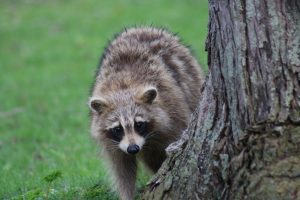
Logistic Growth
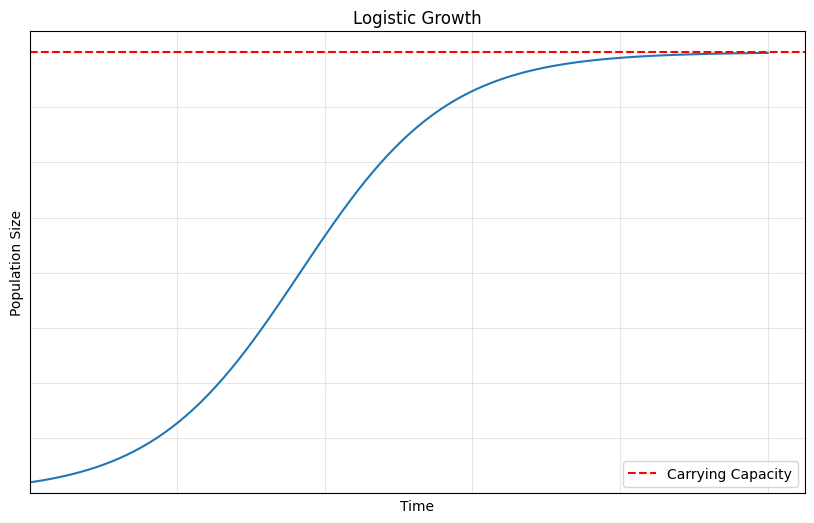
Logistic growth describes a more realistic pattern of population growth. In this model, a population starts off growing quickly, but then the growth slows down as resources become limited. Eventually, the population levels off when it reaches the carrying capacity (K), the maximum number of individuals that the environment can support over time.
This creates an S-shaped curve on a graph. At first, when the population is small and resources are abundant, growth is fast. However, as the population increases, intraspecific competition (competition among individuals of the same species) intensifies. They begin to compete for food, space, mates, and other limited resources. As a result, birth rates may decline and death rates may rise, causing the population growth to slow and eventually stabilize around the carrying capacity. Logistic growth is common in nature because no environment has unlimited resources. It helps ecologists understand how populations are regulated and how they respond to environmental pressures.
After being nearly wiped out by the fur trade, beavers (Castor canadensis) slowly returned to suitable habitats. Their numbers grew quickly at first, but as space and food became limited, growth slowed and eventually levelled off.
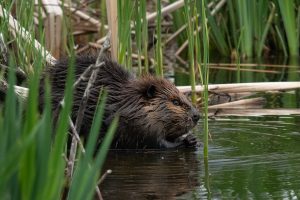
While real populations are more complex, these models provide useful starting points for understanding how populations behave.
Population Dynamics and Regulation
The logistic model of population growth, while valid in many natural populations and a useful model, is a simplification of real-world population dynamics. Implicit in the model is the assumption that the carrying capacity of the environment remains constant, but in reality, it often changes. For example, some summers are hot and dry while others are cold and wet. In many areas, the carrying capacity during the winter is also much lower than it is during the summer. Natural events such as earthquakes, wildfires, and floods can also dramatically alter an environment and reduce its ability to support life. Additionally, populations rarely exist in isolation. They share their environment with other species, leading to interspecific competition – competition between different species for the same limited resources. These factors all influence how a population grows and survives over time.
Population growth is regulated by a variety of limiting factors – environmental conditions that restrict the size, growth, or distribution of a population. These factors determine the carrying capacity of an ecosystem and help explain why populations don’t grow indefinitely.
Limiting factors are typically grouped into two categories:
Density-Dependent Limiting Factors
Density-dependent limiting factors affect a population more strongly as its size increases. These factors help keep populations in balance by slowing growth when numbers get too high. The more crowded a population becomes, the more individuals compete for limited resources like food, water, shelter, and mates. This intraspecific competition can lead to lower birth rates, higher death rates, or both. For example, Tree Swallows (Tachycineta bicolor) are cavity-nesting birds that rely on natural tree holes or nest boxes to raise their young. In a dense population, limited nesting sites can prevent some individuals from reproducing, reducing the overall birth rate. Similarly, in an overpopulated deer (Odocoileus virginianus) herd, food shortages can lead to malnutrition and increased death rate.
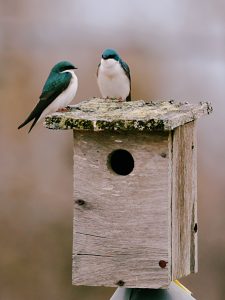
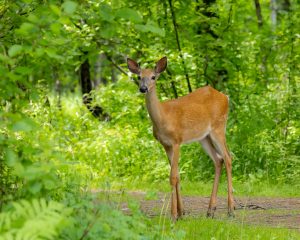
Other density-dependent factors include the spread of disease and increased predation. In dense populations, diseases can spread more easily from one individual to another. Predators may also find it easier to hunt when prey are more concentrated. These pressures naturally limit population growth and help stabilize numbers near the environment’s carrying capacity.
Density-dependent regulation is one of the key mechanisms that shapes logistic growth and helps maintain ecological balance in natural systems.
Density-Independent Limiting Factors
Density-independent limiting factors affect populations regardless of their size or density. These are usually abiotic factors that can cause sudden and dramatic changes in population size. Examples include natural disasters (wildfires, floods, droughts, and hurricanes), extreme temperatures (heatwaves or cold snaps), and pollution (chemical spills, air or water contamination, and pesticide use). These events can drastically reduce population numbers in a short time.
Density-independent factors impact large and small populations equally. For instance, a sudden late-spring frost in Southwestern Ontario can kill large numbers of insect pollinators, regardless of how many individuals were present in the population.
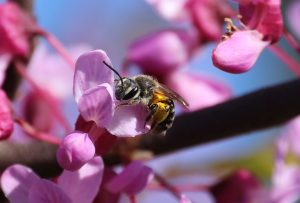
Density-independent factors do not regulate populations in a predictable way. They are random and often severe, which can make population recovery difficult, especially for species already under stress from other environmental pressures. While density-independent factors don’t shape population growth patterns like density-dependent ones do, they are still important to consider, especially in the face of climate change, which is increasing the frequency and intensity of extreme weather events.
In real-life situations, population regulation is very complicated, and density-dependent factors can interact with density-independent factors. A dense population that suffers mortality from a density-independent cause will likely recover differently than a sparse population. For example, a population of deer affected by a harsh winter will usually recover faster if there are more deer remaining, compared with a population of deer living within the same area but with fewer individuals surviving the density-independent cause.
Knowledge Check
Text Description
- The carrying capacity of seals would remain the same, but the population of seals would decrease
- The carrying capacity of seals would decrease, but the seal population would remain the same
- The carrying capacity of seals would decrease, as would the seal population
- The number of seal deaths would increase, but the number of births would also increase, so the population size would remain the same
2. Drag and Drop
Move the terms into the correct category, “Density Independent” or “Density Dependent” factors.
Temperature, Fire, Earthquake, Predation, Disease, Pollution, Food, Flood, Parasitism, Competition
- There is intraspecific competition for den sites
- There are only a certain number of females that are reproductively active
- All of these are true
- There is a limited amount of food available
- They become reproductively mature quickly (early in life)
- They have a high fecundity
- They exhibit Type II survivorship curves
- They have a long lifespan
- c. The carrying capacity of seals would decrease, as would the seal population
- Density Independent Factors: Floods, Pollution, Earthquake, Temperature, Fire, Density Dependent Factors: Competition, Parasitism, Disease, Predation, Food
- c. all of these are true
- d. they have a long lifespan
- True
- clumped
OpenAI. (2025). ChatGPT. [Large language model]. https://chat.openai.com/chat
Prompt: Create 5 multiple-choice questions using the following content

